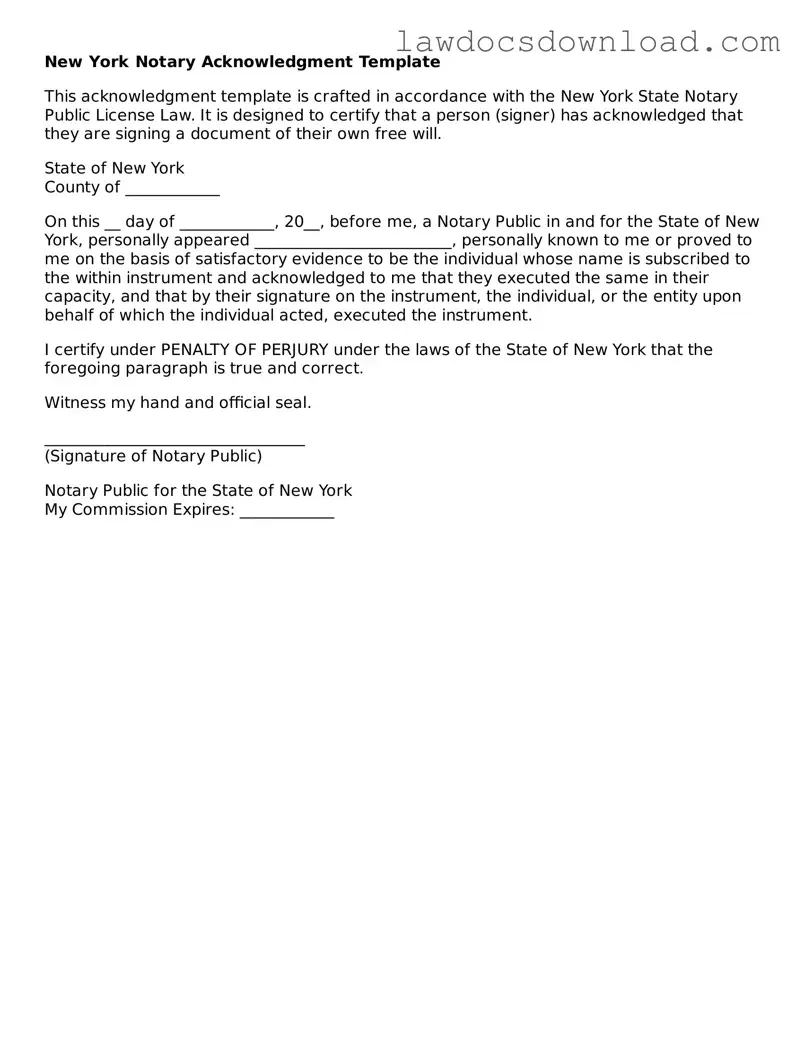New York Notary Acknowledgment Template
This acknowledgment template is crafted in accordance with the New York State Notary Public License Law. It is designed to certify that a person (signer) has acknowledged that they are signing a document of their own free will.
State of New York
County of ____________
On this __ day of ____________, 20__, before me, a Notary Public in and for the State of New York, personally appeared _________________________, personally known to me or proved to me on the basis of satisfactory evidence to be the individual whose name is subscribed to the within instrument and acknowledged to me that they executed the same in their capacity, and that by their signature on the instrument, the individual, or the entity upon behalf of which the individual acted, executed the instrument.
I certify under PENALTY OF PERJURY under the laws of the State of New York that the foregoing paragraph is true and correct.
Witness my hand and official seal.
_________________________________
(Signature of Notary Public)
Notary Public for the State of New York
My Commission Expires: ____________
